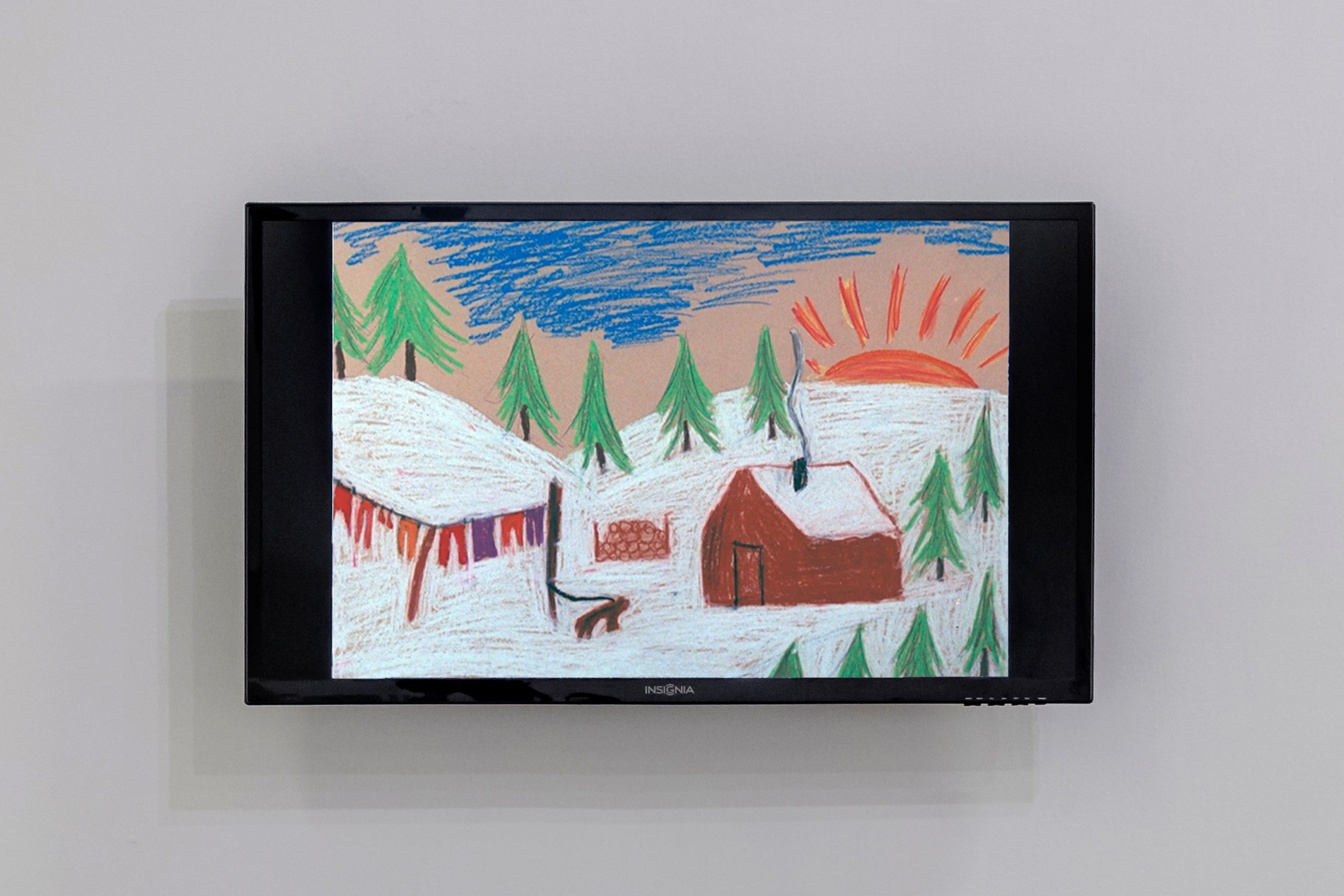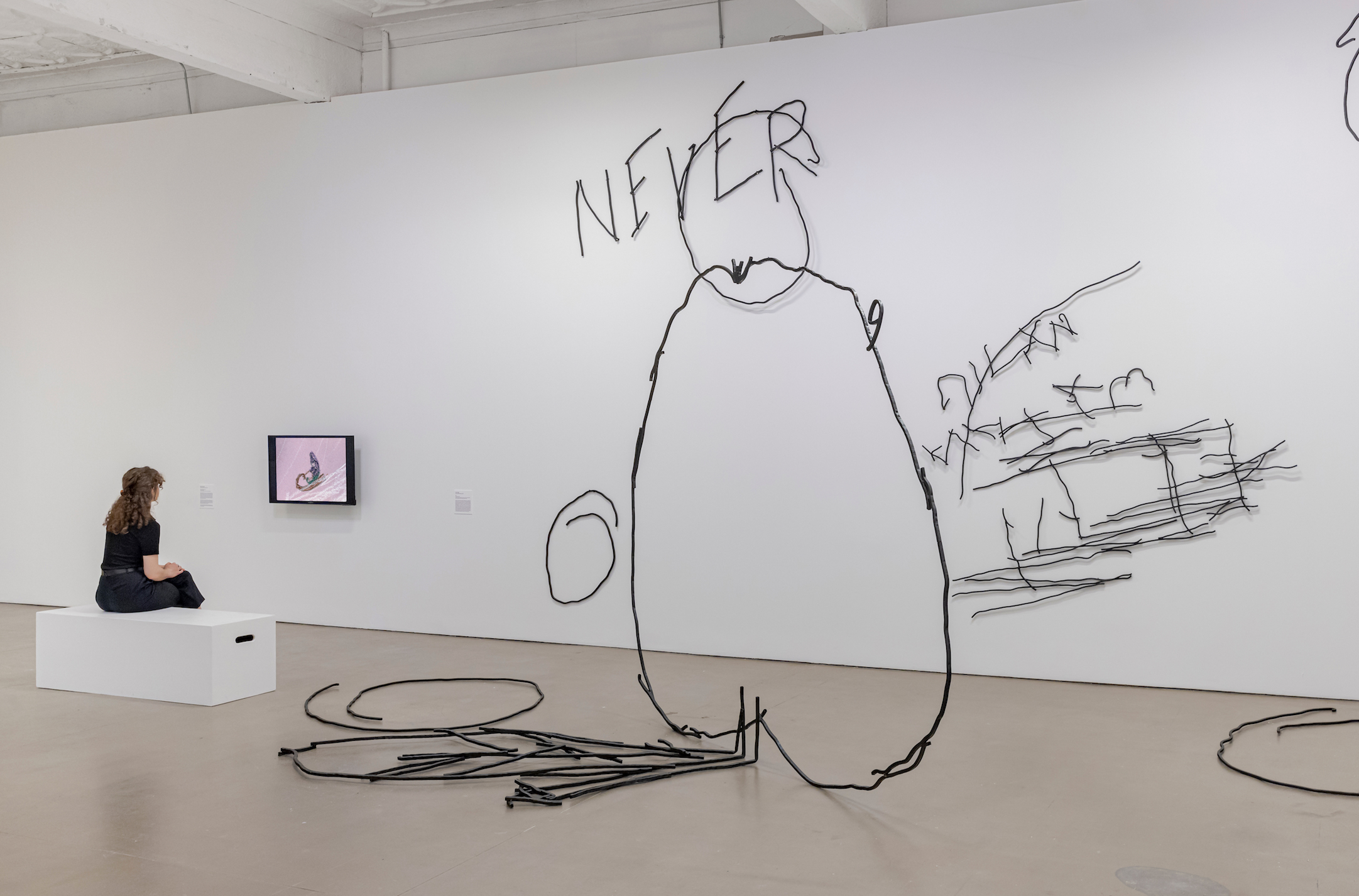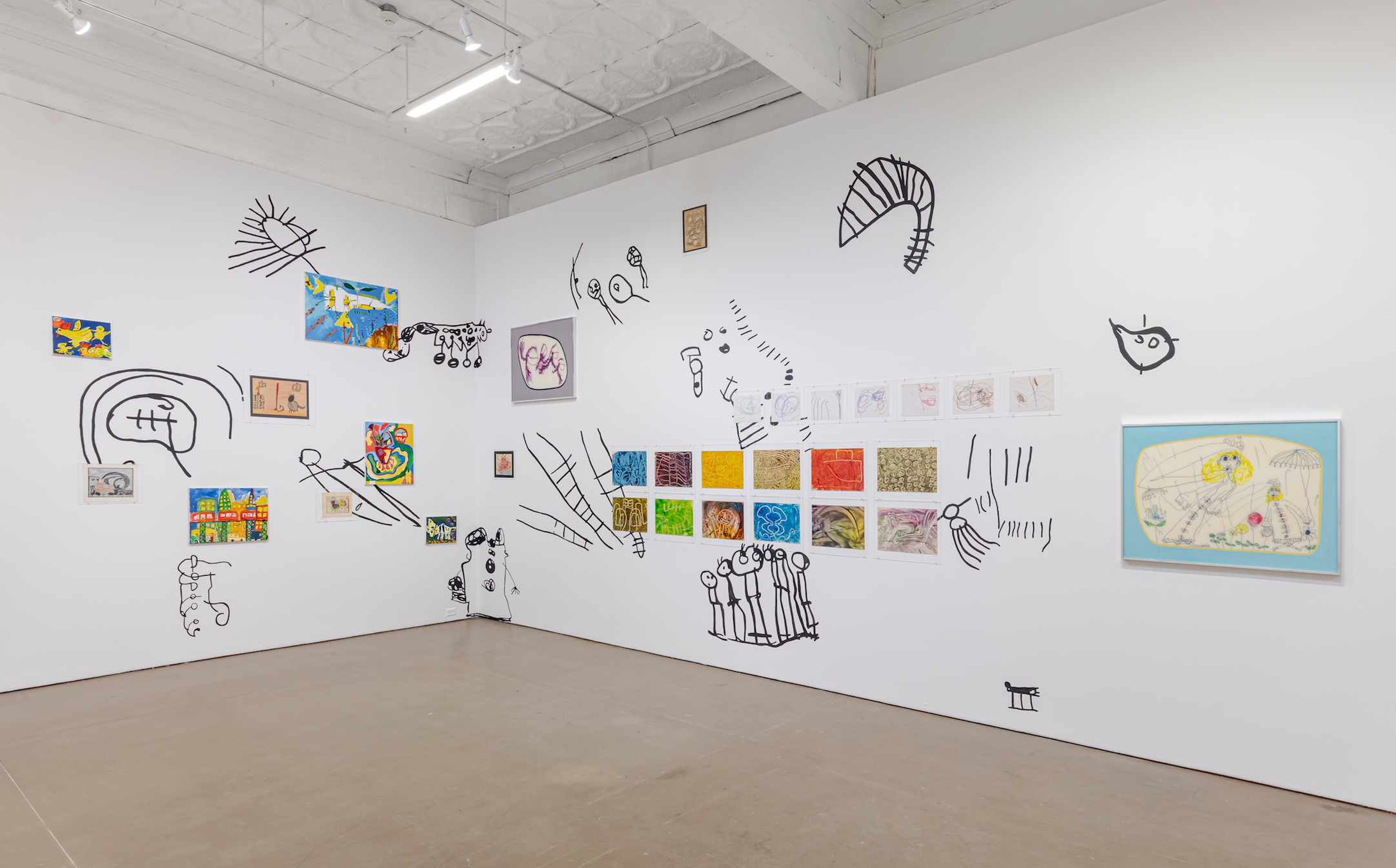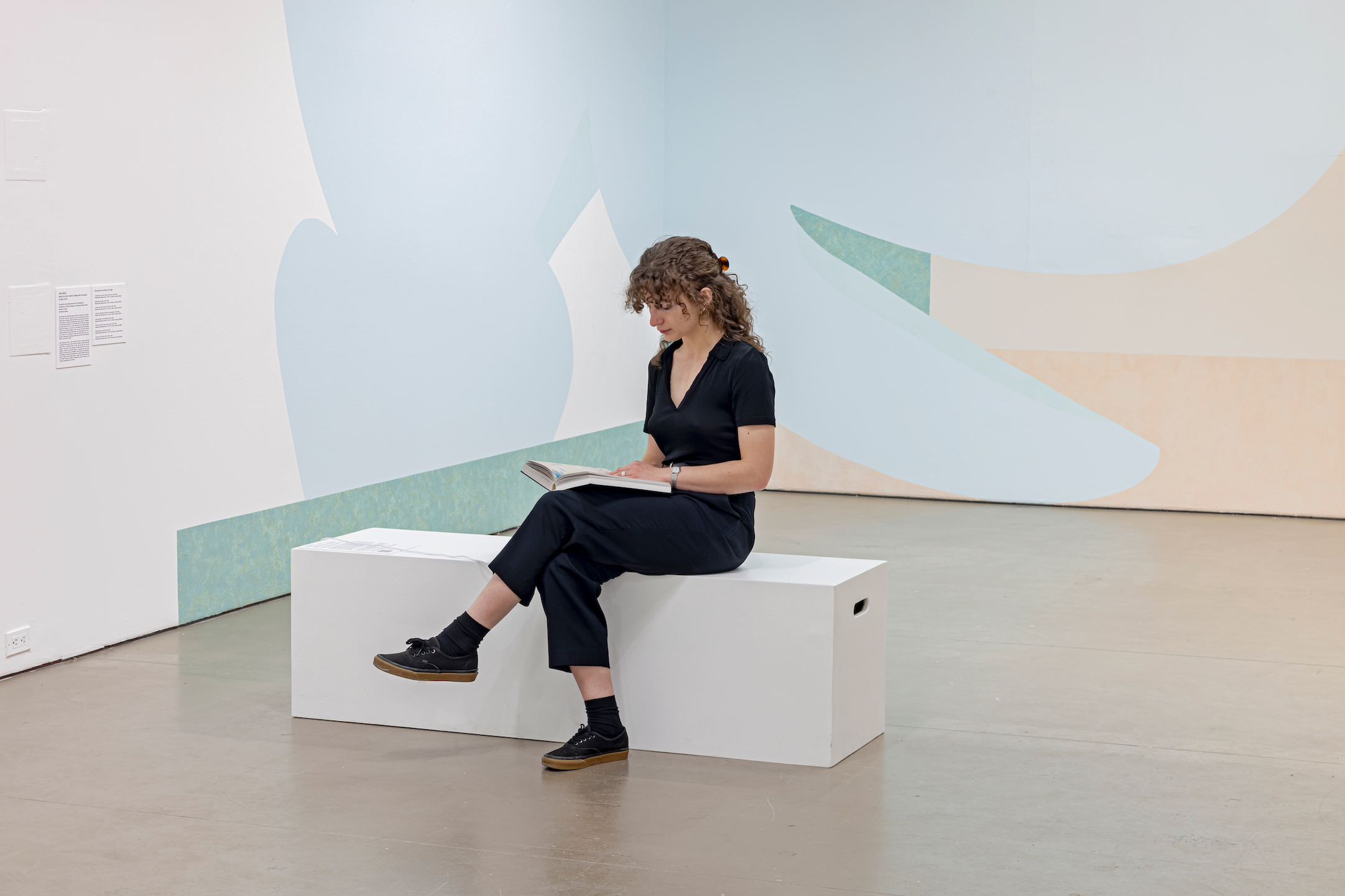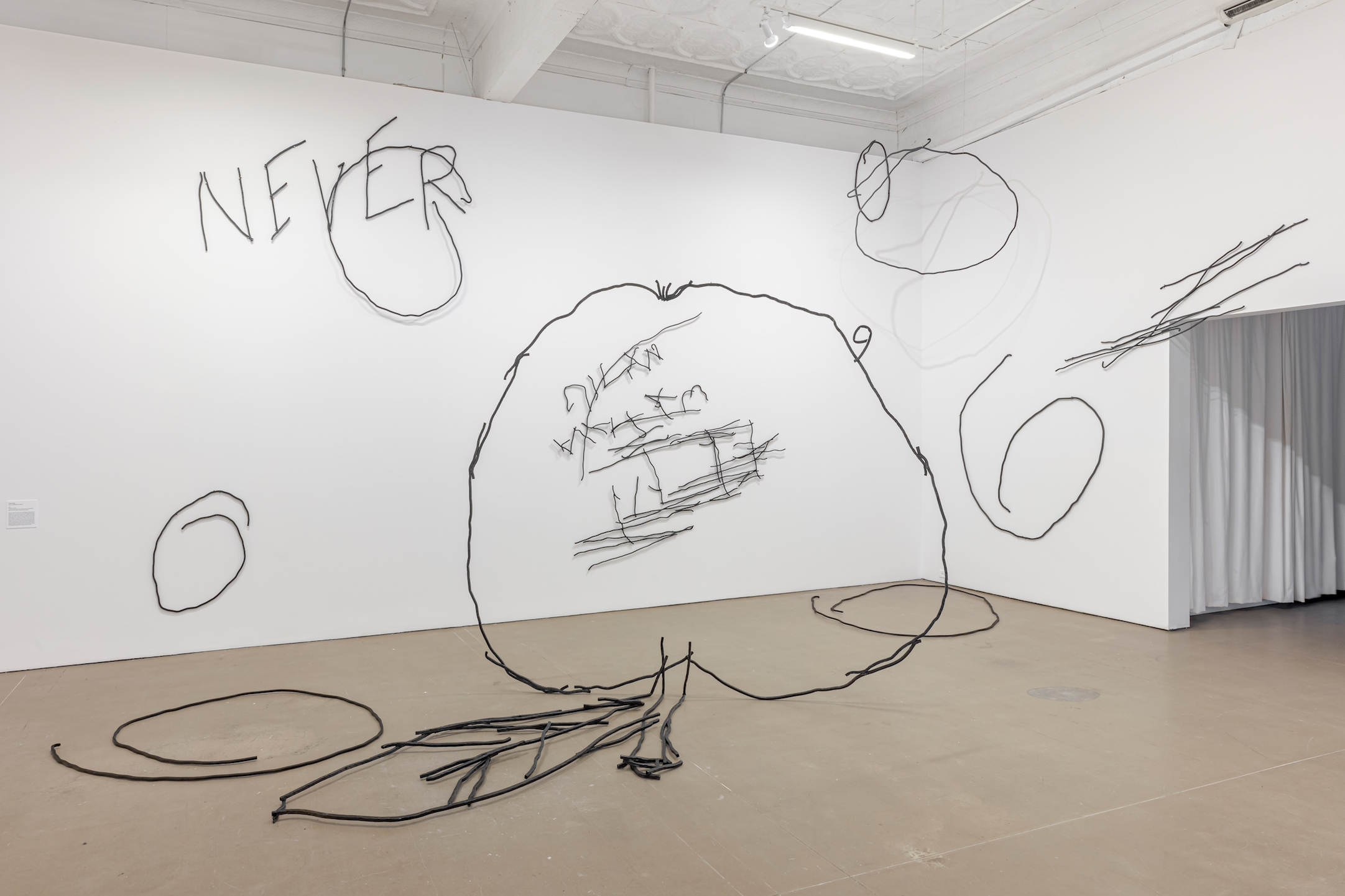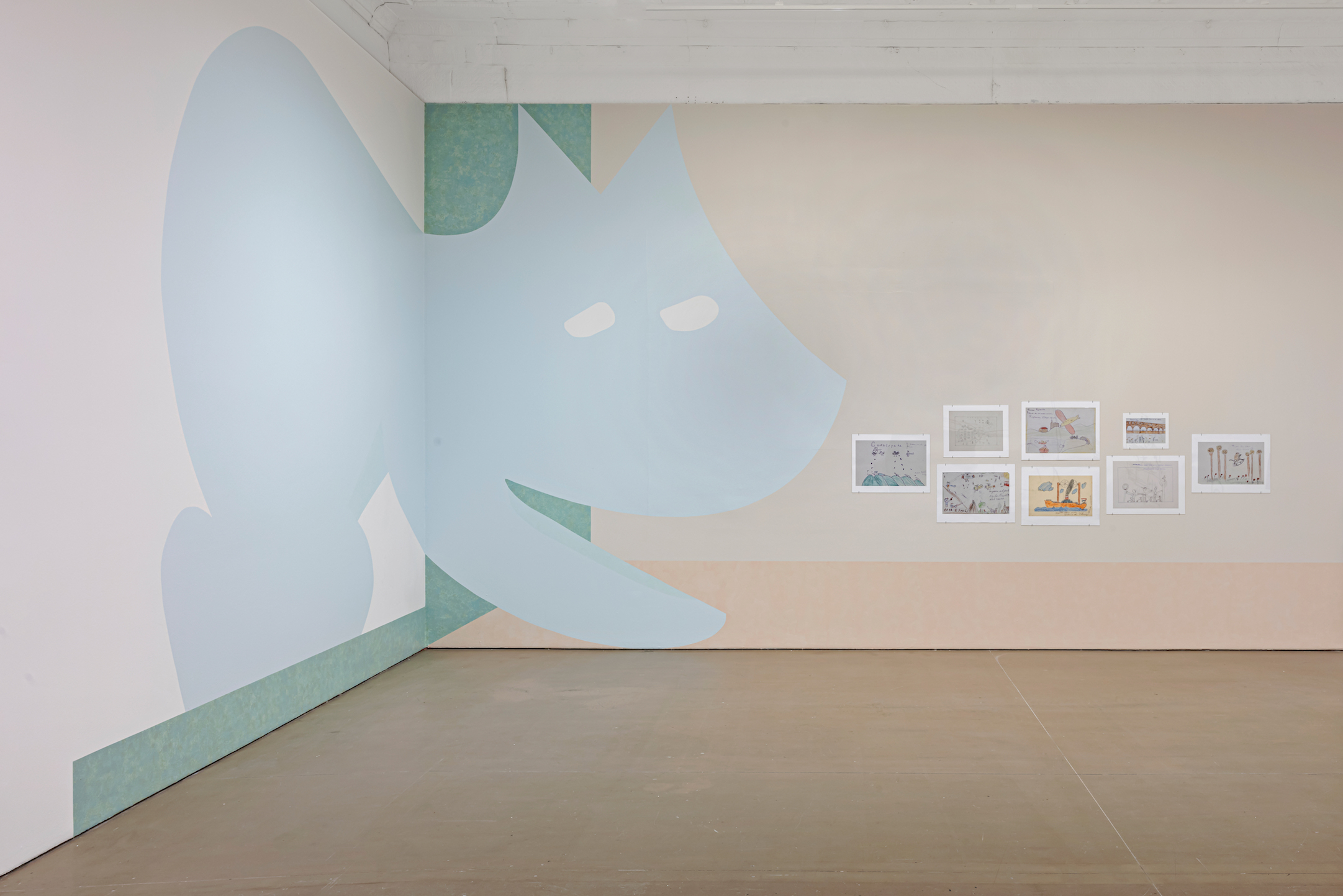This exhibition contains artworks that deal with themes, images and stories that some viewers may find distressing, including children's experiences of residential schools, war, and the aftermath of conflict. An Exhibition Viewing Guide will be available in the gallery with more information; a digital version can be found in the links below.
Evidence is a group exhibition featuring contemporary artists who highlight the unique and alternative perspectives of the world that can be found in art by children. The projects in Evidence by Brian Belott, Petrit Halilaj, Ulrike Müller, Oscar Murillo, and Alanis Obomsawin, draw art by children into the framework of contemporary art, from which such cultural production has been historically excluded.
In spite of its invisibility, art by children has played a major role in the history of modern art since 1900. Between and after the World Wars, it was used by artists to help make sense of a world turned upside down. From Picasso to Dubuffet, countless artists were drawn to children’s distinct and unbridled modes of expression, amassing vast collections of art by children. Like their modernist forebears, the artists in Evidence recognize that children possess an embodied relationship to space that is lost or transformed in adulthood. By contrast, these artists foreground the work of children itself, such that it maintains its integrity within the framework of the adult artists’ respective practices.
Evidence is anchored by Alanis Obomsawin’s debut work Christmas at Moose Factory (1971). A distinguished Abenaki filmmaker, the artist has worked closely with children throughout her decades-long career. Christmas at Moose Factory was filmed at a residential school in northern Ontario and is composed entirely of the stories and illustrations of young Cree children living on Moose Factory Island in James Bay’s lowlands. From this work onwards, Obomsawin has used documentary film as a medium that allows people, specifically members of Indigenous communities, to speak for themselves.
Ulrike Müller’s interest in drawings by children comes as a natural extension of her artistic and curatorial work around under-recognized artists and subject matter. Her large-scale murals of interlocking animal-like shapes become backdrops to children’s drawings sourced from collections and historical archives.
For the past fifteen years, Brian Belott has copied drawings and paintings by children, and refers to his own efforts as “failures” and “forgeries.” Upon discovering the work of child psychologist and educator Rhoda Kellogg, and her collection of over two million drawings by children from thirty countries, Belott began emulating and exhibiting selections from Kellogg’s collections alongside his own works in room-sized installations.
Since 2013, Petrit Halilaj has been recreating drawings he found etched onto the desks of the elementary school in his home village of Runik, Kosovo, as a series of large-scale iron sculptures. In Abetare (2013-ongoing), the recovered etchings document a range of subjects and imagery, including sketches of everyday objects and references to everything from European soccer clubs to the war in Kosovo (1998-99).
During the same period, Frequencies, an ongoing project by contemporary painter Oscar Murillo in collaboration with political scientist Clara Dublanc, has partnered with schools around the globe to document desktop drawings by adolescents in a cross-section of class and cultural backgrounds. Canvas is sent to each school to cover desks in a classroom, which is then drawn upon freely by students and sent back to Murillo’s studio. To date, Frequencies has collected roughly 40,000 canvases from 34 countries. As part of this exhibition, Frequencies will begin collaborating with schools in Canada.
Evidence takes its title from Allan Sekula’s definition of the term, as that which is presented to the eye and made evident in the image or trace,¹ to characterize a range of artists’ projects that present art by children as worthy of recognition within larger stories of contemporary art and cultural history. Evidence is the second exhibition curated by Amy Zion that examines the role of art by children within the framework of contemporary art. The first exhibition took place at the Queens Museum, New York in 2020, in conjunction with a project by Müller.

